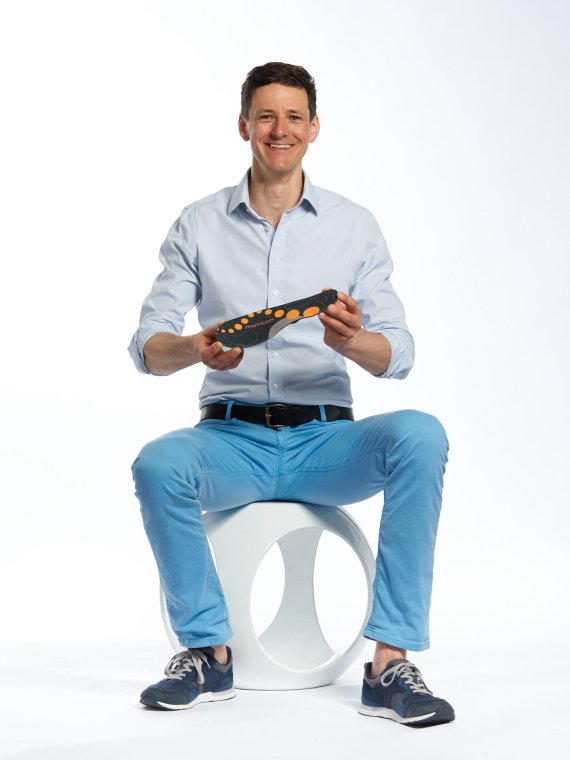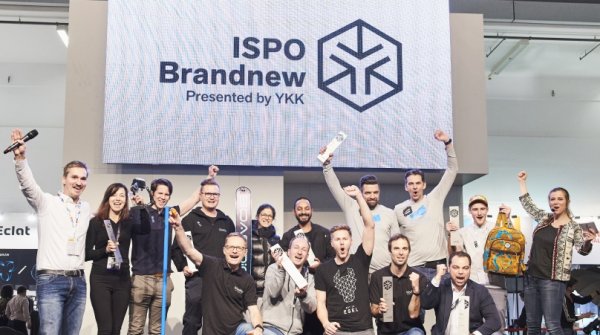
It wasn't until the Moticon founders developed the sole for other sports that the startup really took off. Moticon CEO Maximilian Müller explains to ISPO.com which mistakes the startup made over six years ago and why the business idea works today.
Interview with Moticon CEO Müller
ISPO.com: Mr. Müller, in 2010 you received an award at ISPO BRANDNEW. How have things been going at Moticon since then?
Dr. Maximilian Müller: Very well overall. We have now established ourselves excellently in professional sports, orthopedic technology and scientific research. The number of employees has almost tripled in the past year to a total of 16, and two more employees will join us in the fall.
Sales are also in line with our expectations. It has paid off that we have invested very heavily in our own production, manufacture of sensor technology, assembly and quality assurance. The "Made & Designed in Germany" is an important unique selling point for Moticon.
Moticon: From a sole for ski boots to a sports all-rounder
You were awarded at ISPO BRANDNEW for a ski sole, how did it come to the sole for all athletes?
We have done a roll backwards since participating in ISPO BRANDNEW. The starting point of Moticon was to make a laboratory technology accessible to the normal skier. We wanted to explore how body position and weight transfer affect the perfect turn. Our vision was to develop a wireless, easy-to-use sensor sole as a wearable for the consumer market. For this, we were awarded ISPO BRANDNEW Winner in 2010. But unfortunately, with "Skigo" we were not able to keep the targeted price point for the consumer.
That must have been a bitter setback...
...but it turned out to be a stroke of luck for us. Because this allowed us to focus fully on professional application areas in which the decisive purchasing criteria are not price, but technology and application possibilities. Three core segments have developed from this: Moticon PHYSIO, Moticon ORTHO and Moticon SCIENCE.
What exactly can your sensor sole do after six years of further development?
Moticon analyzes the actual pressure load in the foot, asymmetries in weight distribution and pressure centers. Gait line, ground contact times and jump heights are also measured and evaluated. In addition, muscular imbalances and hidden deficits in the movement sequences can be detected. The system consists of the sensor sole and, depending on the application, specific software or apps. Setting up and taking measurements is not very complicated and takes less than five minutes for a standard analysis.
We also focus on interaction - between doctor and patient, trainer and athlete. With us, this is optimized by a cloud-based connection. The data can be accessed at any time and from anywhere.

Does the ISPO BRANDNEW award still play a role for your company?
Absolutely! We still get inquiries today that refer to the ISPO BRANDNEW AWARD. It's a seal of quality and at the same time a reference that has a very high level of credibility among our customers. And we achieved a high level of awareness at a very early stage back then, which we could not have achieved in this way. Our development was certainly significantly accelerated as a result - a jump start, so to speak.
Moticon soles were also at the 2016 Olympics.
Can you give new "sports startups" a few tips on what to look for when implementing an idea?
Anyone developing hardware should make sure that the product is really final in its basic function and can be produced in quantity. If the product doesn't deliver what it promises, it becomes dangerous. We should have taken more time back then. Looking back, I would have gladly done without this experience. It's better to plan another six months for testing and make sure you choose partners who can not only build prototypes, but also scale quantities. You should also incorporate feedback from the market into product development.
What are your next goals?
From the end of 2018 or earlier, we want to create another product for the consumer market. This time, however, for real! Because our product is not only relevant for professionals, whether for individual optimization of movement patterns or rehab after an injury. Our sensor soles are already able to send a warning tone to the cell phone if, for example, the load on the leg is too high after an injury.

Where is Moticon currently used in professional sports?
Our sensor soles are used in fast, dynamic sports such as ice hockey, speed skating, alpine ski racing, ski jumping, basketball and soccer. We have just measured the entire FC Ingolstadt 04 team as part of the project "The Transparent Athlete" together with the head of the club's medical department, Christian Haser. Our sensor soles were also used on medal winners at the 2016 Olympics in Rio - but I'm not allowed to reveal any more than that.
Do you also use Moticon yourself?
Of course I do. I always test our products myself and run about 20 kilometers a week with them.
That's Moticon:
- Founded: 2008, while founders Maximilian Müller and Rober Vilzmann were still studying engineering.
- ISPO BRANDNEW: In 2010, the idea to develop an insole for skis with sensors was awarded by ISPO BRANDNEW.
- Ski Go becomes Open Go: In 2010, the Ski Sole becomes Open Go - with this, the startup really takes off and has established itself on the market to this day.
- Employees: In the fall of 2016, Moticon has 18 employees.
- Headquarters: Munich
- Awards
- Mountain sports
- Bike
- Fitness
- Health
- ISPO Munich
- Running
- Brands
- Sustainability
- Olympia
- OutDoor
- Promotion
- Sports Business
- Textrends
- Triathlon
- Water sports
- Winter sports
- eSports
- SportsTech
- OutDoor by ISPO
- Heroes
- Transformation
- Sport Fashion
- Urban Culture
- Challenges of a CEO
- Trade fairs
- Sports
- Find the Balance
- Product reviews
- Newsletter Exclusive Area
- Magazine





